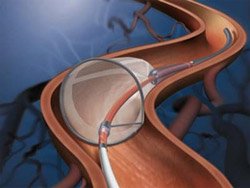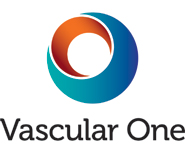What is hypertension?
Blood circulates throughout our bodies pumped along by the heart. With each beat of the heart the pressure rises and after each beat it falls. The maximum pressure after a beat of the heart is called the systolic pressure and the low point of pressure is called the diastolic pressure. There are many causes of high blood pressure. Systolic pressure greater than 140 mm Hg or a diastolic pressure greater than 90 mm Hg is considered hypertension.
What causes hypertension?
Most people who develop hypertension have what is known as essential hypertension. This type of hypertension does not have a known cause and there is no cure. Fortunately, when detected early, this type of hypertension can be controlled with medications, and the serious effects of hypertension can be avoided. A small portion of the cases of hypertension are caused by narrowing of the arteries supplying blood to the kidneys. The kidneys play an important role in the regulation of blood pressure. If blood flow to the kidneys is slowed, the kidneys send out chemicals that raise the blood pressure dramatically. This situation is known as renovascular hypertension. Fortunately, this form of hypertension is treatable.
How can renovascular hypertension be detected?
Since only a small fraction of the people with hypertension have the treatable form called renovascular hypertension, doctors perform careful screening for renovascular disease. If your doctor suspects you have renovascular disease he/she may have sent you for certain tests to determine if the blood flow to your kidneys is impaired. There are several tests that can be used to evaluate someone with hypertension for narrowing of the renal arteries.
In the Hunter area, Vascular Ultrasound performed by experienced sonographers is the best screening test. If this is positive, then you may be referred for an angiogram.
The most accurate test for this disease is an angiogram. An angiogram is an x-ray study used to study arteries. The test involves placing a small plastic tube into the arterial system. This small plastic tube, or catheter, is usually introduced into an artery at the groin. The catheter is then advanced up into the arteries near the kidneys. There, x-ray contrast is injected into the arteries, and x-ray images of the arteries are taken.
What is renal angioplasty?
If the renal angiogram reveals a narrowing of the renal arteries, a balloon-tipped catheter can be used to stretch open the narrowing. The technique of stretching arteries open with a balloon is called angioplasty. The technique is more formally known as percutaneous transluminal angioplasty or PTA for short. It has been clearly demonstrated that all narrowings near the origin of the renal artery require a stent to obtain a good result.
What is a renal artery stent?
Small metal devices called stents are used to improve results and prevent re-narrowing. These stents are deployed in the renal artery at the site of narrowing and provide support to keep the vessel open.
Embolic Protection Devices
 These devices were developed for carotid angioplasty to prevent drebris passing to the brain during the procedure. The devices are essentially a fine filter and are removed at the end of stenting the renal artery.
These devices were developed for carotid angioplasty to prevent drebris passing to the brain during the procedure. The devices are essentially a fine filter and are removed at the end of stenting the renal artery.
The devices are still being investigated for their role in renal angioplasty. At this stage, they appear useful in patients with renal failure as they prevent further damage to the Kidneys.
Image illustrates Embolic Protection Device in situ. (Illustration sourced from Boston Scientific)
What happens after a renal angioplasty?
Patients usually need to lie flat for approximately 6-8 hours after the catheter is removed from the artery. After that, you will be observed in hospital for sudden changes in blood pressure that day and night and be discharged the next day, after checking renal function and having an ultrasound scan.
